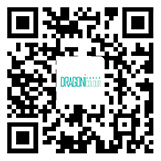12-06
NEWS

Check category
12-06
Edible colorant aluminum lake is a safe food additive
12-06
The misunderstanding of food coloring
12-06
Inorganic pigments: foreign companies are optimistic about China!
Previous page
1
Next page

Zhejiang Dragoni Colour Technology Co.,Ltd / 浙IPC备19032004号 Powered by www.300.cn
scan
Focus on us
Dragoni Colour,with you

浙江吉高德色素科技有限公司/ 浙IPC备19032004号 网站建设:中企动力温州

